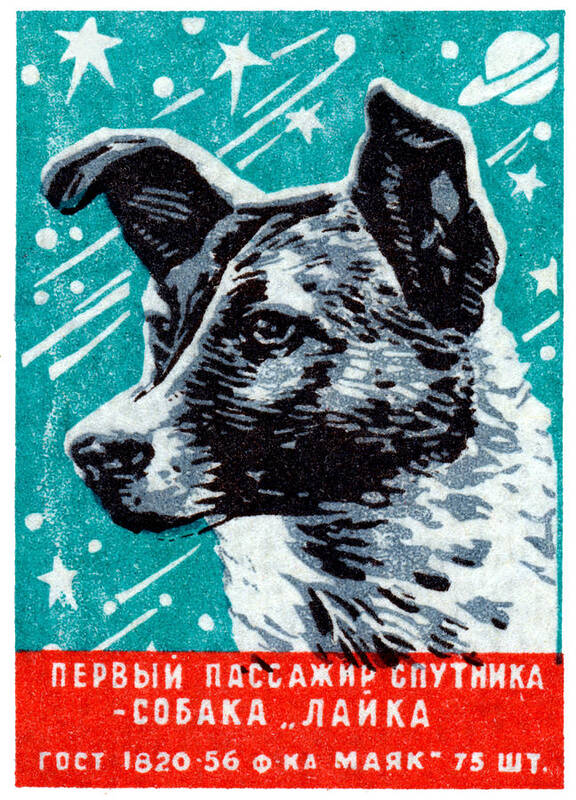

Coat is shorter on the head and front sides of the legs. Colouring is white and any patching (bicolour or tricolour). On the neck it forms a mane, especially and clearly pronounced in males thick feathers on the back sides of the front and hind legs the tail feathered with a small fringe.

The coat is thick and glossy, with straight, coarse hair of medium length, with a very well developed thick and dense undercoat. Tail is set high, covered with a thick furry coat, curled up as semi- circle on the dog’s back, sickle curve tail allowed. Depigmentated eye rim against white background permissible.Įars are of a triangular shape, set high, wide at the base, thick, erect or half-pricked. Dry, tight fitting eye rims matching the colour of nose. Eyes colour is dark brown, or blue as well as odd eyes (one brown, one blue) or blue segments on brown iris.
#LAIKA THE DOG SKIN#
Yakutian Laika is a dog of medium size, strong, compact, well-muscled, with moderately long legs and thick skin with no signs of looseness. These skills have glorified the Yakutian Laika as a versatile breed, not only in Russia, but also in many countries on different continents. For many centuries, the Yakutian Laika accompanied the northern man in everyday life, helping him to hunt, vigilantly watch his home, herd reindeers and transport goods in the severe conditions of the Far North. The first Breed Standard for the North-East Sled Dog was adopted in 1958 and it formed the basis for the Yakutian Laika Breed Standard published in 2005 by the Russian Kynological Federation. Petersburg, 1856): “There are 15157 dogs in the Yakut region used for sled work”.

The first mention of the Yakutian Laika’s total number found in the book “Statistical tables of the Russian Empire” (St. The first description of the Yakutian Laika appeared in the book “Geography of the Russian Empire” (Derpt, 1843), which announced it to be a “dog of a special breed”. The first published account of the Yakutian dogs was entitled “How Yakutians travel in winter” which was included in the book “Northern and Eastern Tartary” by Nicholas Witsen (Amsterdam, 1692). The very first references about dogs in this region date back to 1633. Certain archaeological discoveries confirm that the local people used dogs for sledding and hunting as far back as 8000 years ago. The Yakutian Laika is an ancient, native dog breed, which was naturally bred by aboriginal people of the North East of Russia as a sled dog and a hunting dog.


 0 kommentar(er)
0 kommentar(er)
